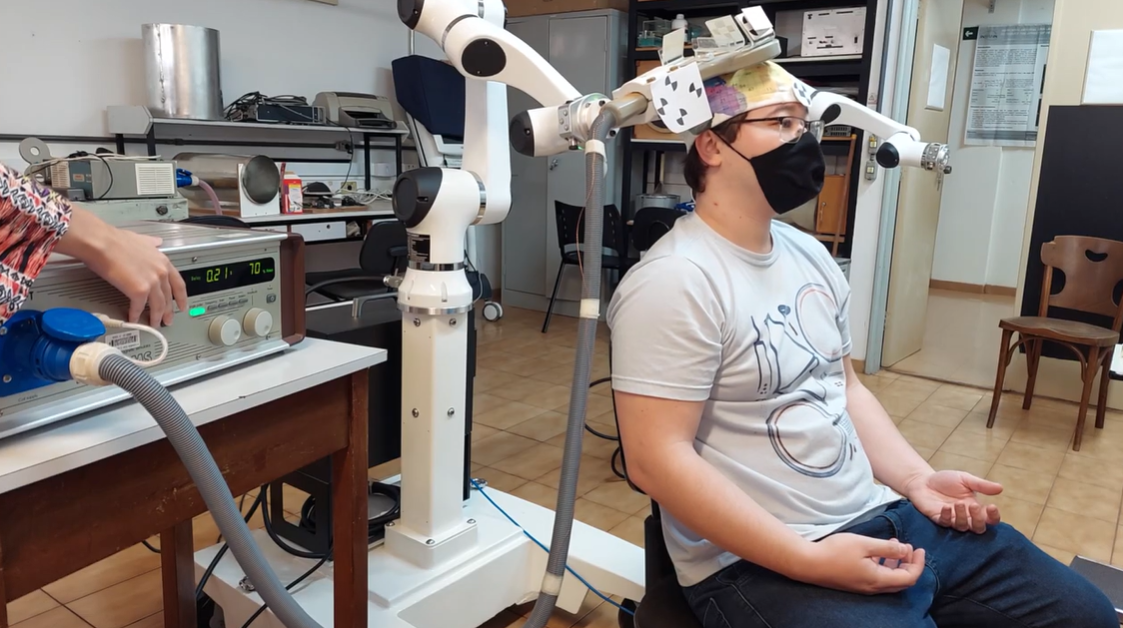


The platform was tested on three volunteers in Finland (photo: NeuroMat)
Published on 09/26/2024
Agência FAPESP* – The technique known as transcranial magnetic stimulation (TMS) has been used to study and treat several health conditions, including depression, Parkinson’s disease, obesity, chronic pain, and neuromuscular diseases. Researchers from the University of São Paulo (USP) in Brazil and Aalto University in Finland have formed a partnership to improve the practice by combining robotics and neuronavigation.
The system developed in the study uses a robot and cameras to locate the small brain regions that can be treated, diagnosed, or studied with the non-invasive technique. The results were published in the journal Brain Stimulation.
The Brazilian part of the work was carried out at the Research, Innovation, and Dissemination Center for Neuromathematics (NeuroMat), a FAPESP Research, Innovation, and Dissemination Center (RIDC) based at USP.
Transcranial magnetic stimulation is one of NeuroMat’s main lines of research and innovation, coordinated by Professor Oswaldo Baffa Filho, one of the authors of the article.
Currently, TMS devices, which use a magnetic field to stimulate specific regions of the brain, have problems. These devices have a limited range, so their positioning on the subject’s head must be very precise. In addition, the devices are heavy, weighing an average of 5 kilos. These two aspects make the device difficult to use, slow, and physically demanding, requiring highly trained professionals to apply TMS.
To overcome these problems, there are robotic handling system alternatives. However, these alternatives are generally expensive and closed source, making it difficult to experiment with new handling possibilities.
Using free neuronavigation software, InVesalius, the group was able to create an open-source program that uses a robot to manipulate a TMS device in a highly precise and autonomous manner. In this program, the robot can also automatically adjust itself according to the movements of the participants.
The electronic robotic platform for directing transcranial magnetic stimulation was tested on three volunteers at Aalto University, creating motor maps of their brains.
According to the authors, the platform “is an important step towards increasing the safety, precision, and reproducibility of TMS procedures. It offers new prospects for the creation of closed-loop, operator-independent brain stimulation protocols capable of covering large areas of the brain, potentially leading to better treatments for neurological disorders.”
The article “Robotic-electronic platform for autonomous and accurate transcranial magnetic stimulation targeting” can be read at: www.brainstimjrnl.com/article/S1935-861X(24)00058-5/fulltext.
* With information from NeuroMat.
Source: https://agencia.fapesp.br/52868